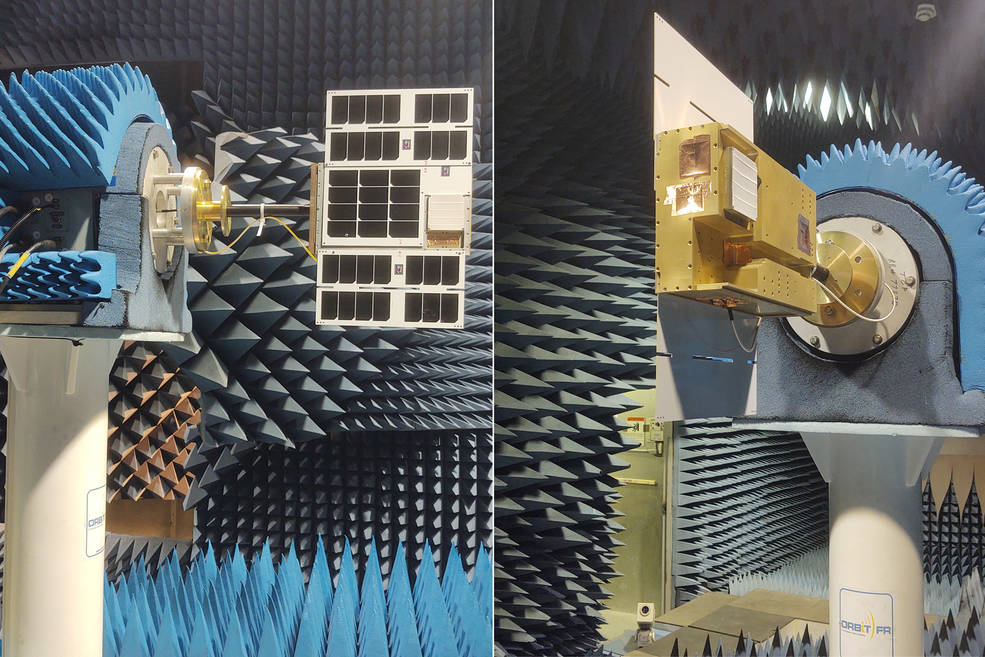Small Spacecraft Activities Around the Agency Archive
Highlights for August 2021
NASA’s Kennedy Space Center / CubeSat Launch Initiative
The Launch Services Program recently facilitated the launch of two more CubeSat Launch Initiative (CSLI) selected CubeSats on two different missions: ELaNa 33 / NG-15 – Antares from NASA’s Wallops Flight Facility, Virginia and ELaNa 36 / SpaceX 22 – Falcon 9 from NASA’s Kennedy Space Center, Florida.
To date, 125 CSLI CubeSats have been launched and another 58 are to fly on 13 different ELaNa missions within the next 12 months. The 13th annual CSLI proposal selection process is scheduled to begin in early August 2021 with proposals due in November 2021 and selections announced in early 2022.
Read more about CSLI at the following links:
Small Satellite Missions
NASA CubeSat Launch Initiative
NASA’s Goddard Space Flight Center / Wallops Flight Facility
Two of NASA Goddard Space Flight Center’s (GSFC) 6U CubeSats are being readied for flight. GTOSat and PetitSat have successfully completed antenna testing in the Antenna Anechoic Chamber Facility at Wallops Flight Facility’s (WFF) Systems Integration Lab Complex. The facility, which includes the clean room where the Landsat 9 ESPA Flight System (L9EFS) ring was recently integrated, is operated by NASA WFF Engineering Technology Directorate’s Electrical Systems Branch.
The newly designed Vulcan Wireless Inc. S-band radio and antenna, being utilized in all five GSFC 6Us, were tested at the facility. The purpose of the test was to confirm antenna pattern and gains while on the chassis with flight or simulated solar arrays. The flight antennas were tested while mounted to empty engineering test unit (ETU) spacecraft buses. The GTOSat test configuration is shown below.
NASA’s Ames Research Center
The PACE-1 technology demonstration mission launched on June 30, 2021 on the SpaceX Falcon 9 Transporter-2 mission from Cape Canaveral Space Force Station in Florida. PACE-1 will perform a set of experiments to demonstrate NASA’s Advanced Development Projects, or ADP, avionics system platform technology.
The Cislunar Autonomous Positioning System Technology Operations and Navigation Experiment (CAPSTONE) mission is scheduled to launch in late 2021 aboard a Rocket Lab Electron rocket. CAPSTONE wil demonstrate how to enter into and function in a near rectilinear halo orbit around the Moon and demonstrate spacecraft-to-spacecraft navigation.
NASA’s Jet Propulsion Laboratory
A number of small spacecraft projects recently completed milestones.
- The Polar Radiant Energy in the Far-InfraRed Experiment (PREFIRE) project completed its critical design review (CDR) in mid-June and is moving ahead.
- Lunar Trailblazer held its CDR July 12-14.
- The Sun Radio Interferometer Space Experiment (SunRISE) project held its Integrated Design Review (IDR) July 13-15.
- The Lunar Flashlight project completed Laser Payload testing.
NASA’s Glenn Research Center
SKOUT
In partnership with the Defense Innovation Unit and CesiumAstro, the Space Communications and Navigation (SCaN) Smallsat Ka-band Operations User Terminal (SKOUT) project at NASA’s Glenn Research Center will conduct a flight demonstration of a Ka-band phased array antenna based on commercial 5G technology. Dubbed Cesium Mission 1 (CM-1), the flight will consist of two CubeSats with a Ka-band inter-satellite link. Direct-to-ground communication experiments also are planned to evaluate beam-steering and power-saving features of the phased array.
Cognitive Communications
On the upcoming TechEdSat-13 3U CubeSat mission, NASA’s Ames Research Center, NASA’s Glenn Research Center, Intel, the Exploration Institute, and Brisk Computing will perform the first-ever operation of a neuromorphic processor in space. The Space Communications and Navigation (SCaN) Cognitive Communications project will participate in the mission through its SBIR partner, Brisk Computing, to conduct a demonstration of in-space data routing using a spiking neural network implementation. The mission is anticipated to launch in late 2021.
Wideband
The Space Communication and Navigation (SCaN) Wideband project at NASA’s Glenn Research Center recently completed a ground demonstration of Ka-band roaming technology, allowing seamless communication to both NASA’s Tracking and Data Relay Satellite System (TDRSS) and an Inmarsat Global Xpress satellite. A similar demonstration will be conducted using TDRSS and a SES satellite in July 2021. SCaN anticipates developing a flight version of the wideband capability, suitable for smallsat implementation, in the next few years. (Link: https://www.nasa.gov/feature/glenn/2021/roaming-nasa-space-communications-user-terminal/)

































